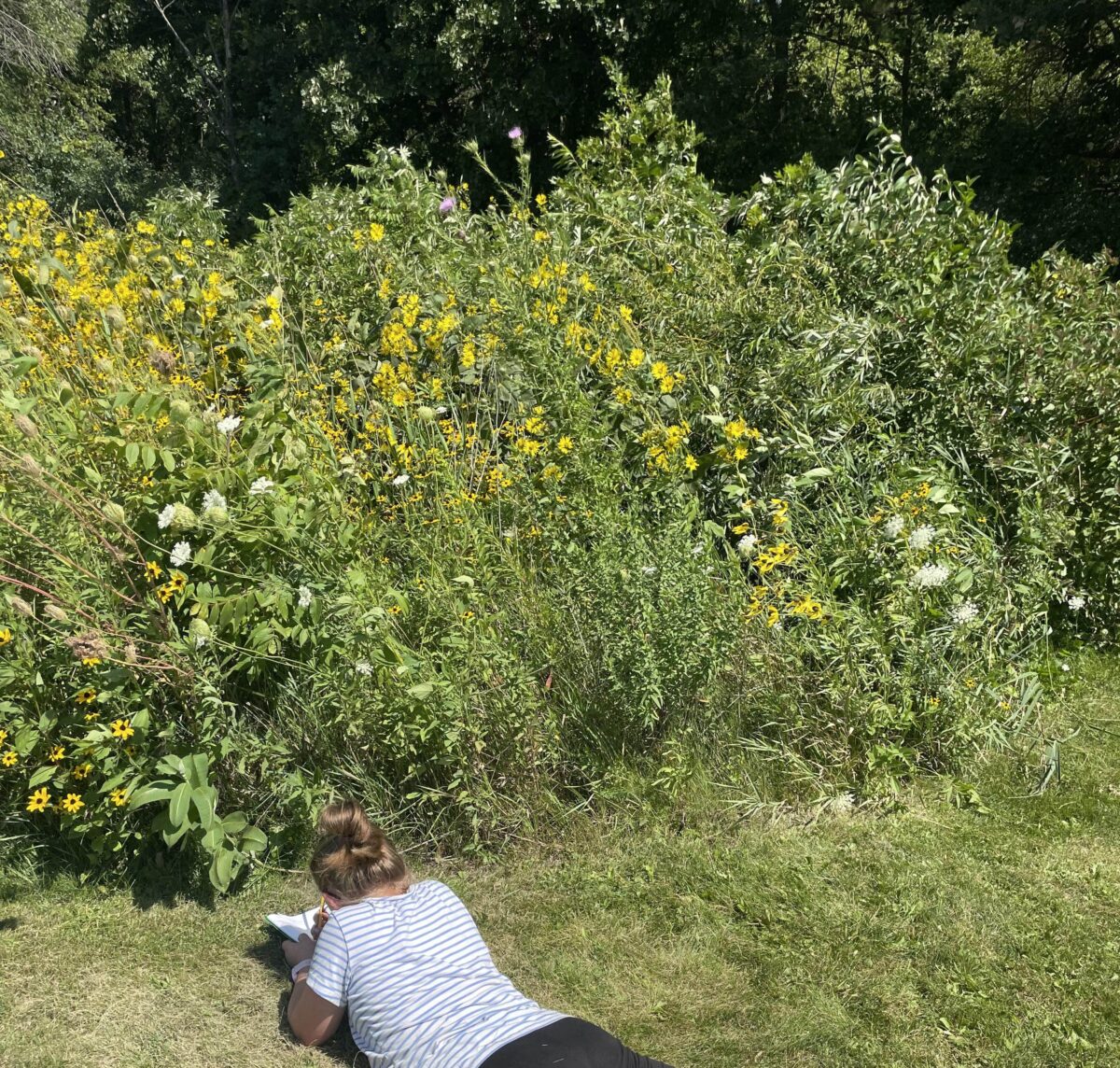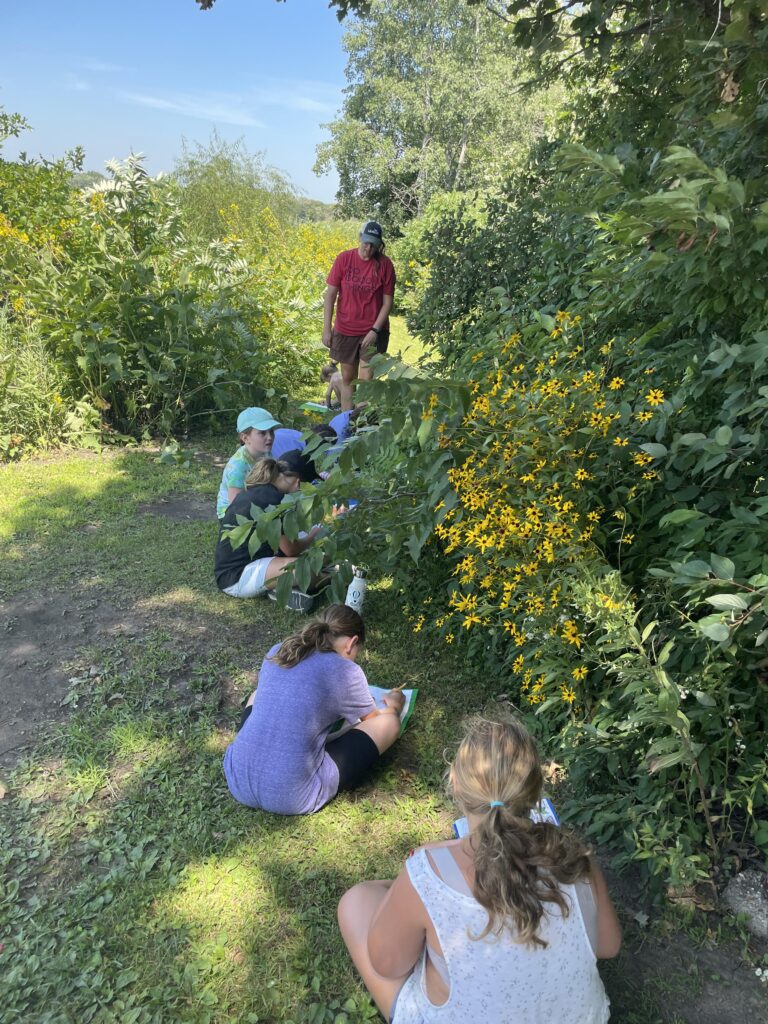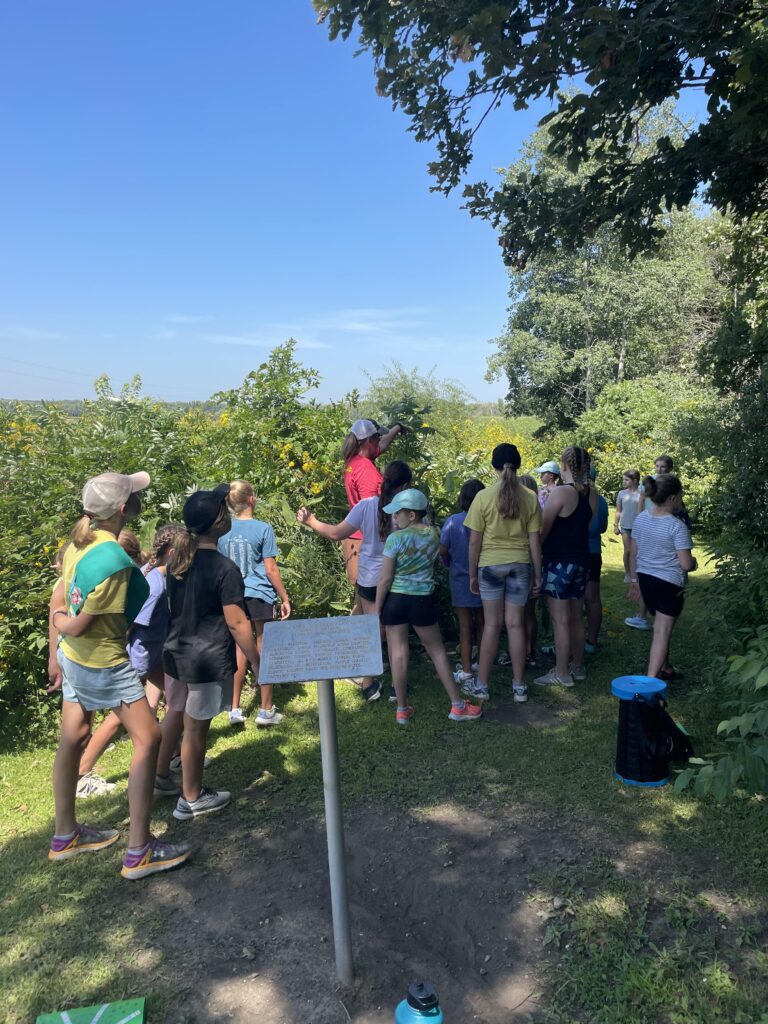Nature Study

I heard grumbling on the short walk to the restored prairie.
“Why do we have to do this?”
“I don’t like to draw.”
“Plants are boring.”
I did not respond but wondered if the prairie and I could win them over.
The setting was the lovely Twin Ponds Nature Center near Ionia, Iowa. Twenty Girl Scouts 9-12 years old were camping for the weekend. I had been asked to lead an aftrenoon nature study of prairie plants and their changes through the seasons.
It was the after-lunch slump, 90 degrees, and humid. My hopes were not high. Yet I find tallgrass prairie fascinating, so I kept walking.
I encouraged the girls to sit in the shade on grass next to the towering plants. For the next 10 minutes, we talked prairie plants. They formed cups with their hands to mimic cup plant leaves. They used their hands to estimate the depth of big bluestem roots. (All guesses were all too short; big blue roots can be 10 feet deep!) They gathered around cup flowers and examined the pollen. They noticed a few cone flowers that had already lost their petals. Even though it was hot and after lunch, the prairie captivated the girls’ attention.
The conversation shifted to seasonal changes over time. The girls spread out to sketch various flowers and predictions of their winter changes. It was not breaktime for me, though.
“Miss Sara, look at this flower!”
“I found a cool bug!”
“Until I started drawing, I didn’t notice that the petals have two shades of yellow.”
“What do you think these berries are?”
“Noooo, I don’t want to be done!”
These girls were filled with wonder as they observed restored prairies. Despite the heat, they asked engaging questions as they made observations. To my surprise, the biggest grumblers at the start became the biggest defenders of the prairie.


